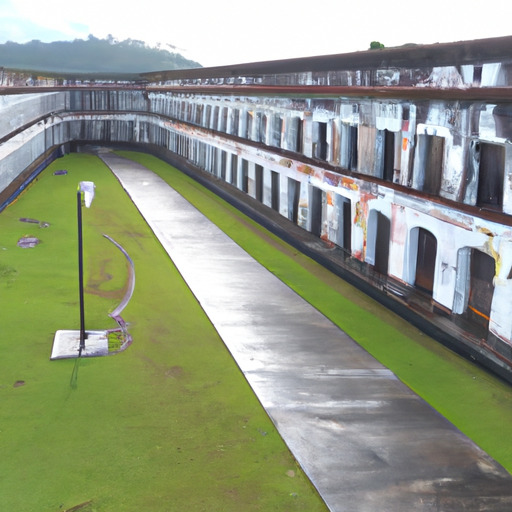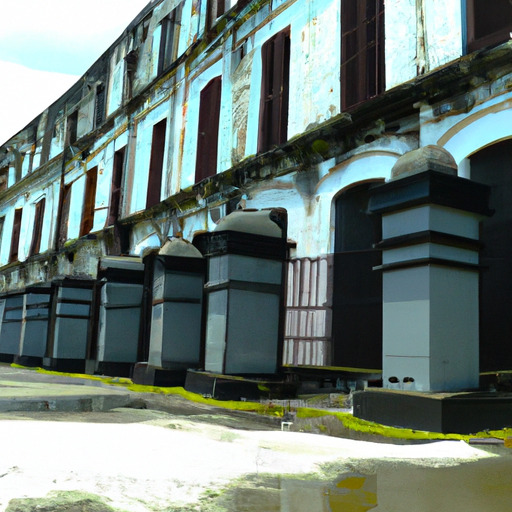Table of Contents
-
- Introduction
- The Legacy of the Cellular Jail in Port Blair, Andaman
- The Impact of the Cellular Jail on the People of Andaman
- The Architecture of the Cellular Jail in Port Blair, Andaman
- The Significance of the Cellular Jail in Port Blair, Andaman
- Exploring the History of the Cellular Jail in Port Blair, Andaman
- Q&A
- Conclusion
“Experience the past, explore the present at the Historical Cellular Jail in Port Blair, Andaman!”
Introduction
The Cellular Jail in Port Blair, Andaman is a historical monument that stands as a reminder of the atrocities committed by the British during India’s struggle for independence. They built the jail in 1906 to imprison political activists. Its harsh conditions were notorious for breaking prisoners’ spirits. Today, the Cellular Jail stands as a symbol of India’s struggle for freedom and is a popular tourist destination. Visitors have the opportunity to explore the history of the jail and also learn about the brave freedom fighters who endured imprisonment here. The jail also houses a museum and a light and sound show that brings the history of the jail to life. Visiting the Cellular Jail is a must-do for anyone interested in India’s history and the struggle for independence.
The Legacy of the Cellular Jail in Port Blair, Andaman
The Cellular Jail in Port Blair, Andaman, is a place of immense historical significance. The British built it in 1906 to imprison political dissidents from India.
The British used the jail to imprison political activists from India, such as Vinayak Damodar Savarkar, Batukeshwar Dutt, and also Mahatma Gandhi, subjecting them to inhumane conditions like solitary confinement, hard labor, and torture.
The legacy of the Cellular Jail is one of immense suffering and injustice. It stands as a reminder of the atrocities committed by the British against Indian freedom fighters. It is also a reminder of the courage and resilience of these freedom fighters, who endured the harsh conditions of the jail and never gave up their fight for freedom.
Today, the Cellular Jail is a national memorial and a popular tourist destination. Many Indians visit this place of pilgrimage to pay respect to the imprisoned freedom fighters. The restored jail now houses a museum displaying artifacts and documents related to its history and the freedom struggle
The legacy of the Cellular Jail is one of immense suffering and injustice, but also of courage and also resilience. It stands as a reminder of the sacrifices made by Indian freedom fighters in their struggle for independence. Many Indians visit this place of pilgrimage to pay respect to the brave people who suffered imprisonment here..
The Impact of the Cellular Jail on the People of Andaman
The Cellular Jail in Andaman, India, is a dark reminder of the country’s colonial past. The jail, constructed in the late 19th century, housed political prisoners during the British Raj. The prisoners endured immense suffering and hardship, and also its legacy still lingers in the minds of the people of Andaman.
The British designed the Cellular Jail as a punishment and isolation facility. The jail comprises of seven wings, each with its own solitary cells, surrounded by a high wall. The prisoners endured solitary confinement with no outside contact, hard labor, and also severe punishments, resulting in numerous deaths.
People in Andaman still feel the impact of the Cellular Jail today. The jail has become a symbol of oppression and injustice, and also it serves as a reminder of the suffering endured by the people of Andaman during the colonial period.
The jail has also become a symbol of resistance and resilience. Many prominent figures in the Indian independence movement were former prisoners of the jail Their courage and determination in the face of adversity has inspired generations of people in Andaman.
The Cellular Jail is now a museum, and also it serves as a reminder of the struggles of the people of Andaman during the colonial period. It is a place of reflection and remembrance, and also it serves as a reminder of the strength and courage of the people of Andaman.
The Architecture of the Cellular Jail in Port Blair, Andaman

The Cellular Jail in Port Blair, Andaman, is a historical monument that stands as a reminder of the colonial rule in India. During the British Raj, authorities used the jail to imprison political dissidents. Its unique design featured seven wings radiating from a central tower, which prevented communication among inmates and enabled guards to monitor them closely. The jail’s construction dates back to 1906..
They used locally available materials like limestone, coral, and timber to construct the jail. Thick limestone blocks formed the walls, while timber built the cells. The cells were small and cramped, with no windows or ventilation. The jailers kept the prisoners in solitary confinement and prohibited intercommunication.”
The jail had an equipped bell tower for sounding alarms during emergencies and announcing the arrival of new prisoners. Additionally, it had a watchtower to keep an eye on the prisoners..
The jail was a symbol of oppression and cruelty during the colonial rule. However, today it stands as a reminder of the struggle for freedom and independence. It is a popular tourist destination, and visitors can explore the jail and learn about its history and book Andaman Tour Package 3 Nights 4 Days. The jail is also a reminder of the resilience of the human spirit, and also the courage of those who fought for freedom.
The Significance of the Cellular Jail in Port Blair, Andaman
The Cellular Jail in Port Blair, Andaman, is a significant landmark in India’s history. The British built it in 1906 to imprison Indian political activists involved in the struggle for independence.
The jail’s design made it impossible for prisoners to communicate with each other. Thus, It consisted of seven wings, each with a courtyard and solitary cells to ensure complete isolation and prevent escape planning
The jail also punished prisoners who committed serious crimes, subjecting them to hard labor and also long periods of solitary confinement to break their spirit and make them compliant.
The British authorities used the jail to punish those involved in the freedom struggle. They tortured many prisoners, resulting in deaths, to deter others from joining the fight for independence.
Now a national memorial, the Cellular Jail serves as a reminder of the sacrifices made by India’s freedom fighters in their struggle for independence. It is a symbol of India’s struggle for independence and a reminder of the courage and resilience of those who fought for it. It is also a reminder of the importance of freedom and the need to protect it.
Exploring the History of the Cellular Jail in Port Blair, Andaman
The Cellular Jail in Port Blair, Andaman, is a place of immense historical significance. Moreover, The British built it in 1906 to incarcerate political prisoners from India. The jail stands as a reminder of the country’s fight for independence.
The authorities designed the jail as a place of extreme punishment and isolation. They built it in the shape of a seven-pointed star, with each point leading to a separate cell. The cells, small and dark, held prisoners in solitary confinement. Moreover, The jail earned notoriety for harsh punishments, including flogging and prolonged solitary confinement
The British used the Cellular Jail to imprison political activists from India, among them were freedom fighters like Vinayak Damodar Savarkar, Batukeshwar Dutt, and also Mahatma Gandhi. The jail subjected them to severe punishments and harsh conditions, resulting in many deaths.
Today, the Cellular Jail stands as a memorial to the struggle for Indian independence. “The jail, now a museum, remembers the sacrifices of those who fought for freedom.” Additionally, Visitors can explore the cells and learn about the prisoners’ history.”
The Cellular Jail is an important part of India’s history, and it is a reminder of the country’s struggle for independence. It is a place of immense historical significance, and also it stands as a reminder of the courage and resilience of those who fought for freedom.
Furthermore,
Q&A
Q1. Where is the Cellular Jail located?
A1. The Cellular Jail is located in Port Blair, Andaman.
Q2. What is the history of the Cellular Jail?
A2. The British constructed the Cellular Jail in 1906 as a prison for Indian freedom fighters and also exiled political prisoners to the remote Andaman Islands.
Q3. What is the architecture of the Cellular Jail like?
A3. The Cellular Jail is a three-storeyed building with seven wings radiating from a central tower. The building has a star shape and contains 698 cells in total
Q4. What can visitors see at the Cellular Jail?
A4. Visitors can see the cells, the gallows, the museum, and also the light and sound show.
Q5. Is there an entry fee to visit the Cellular Jail?
A5. Yes, there is an entry fee of Rs. 30 per person.
Conclusion
In conclusion, Anyone interested in India’s history must visit the Cellular Jail in Port Blair, Andaman It is a reminder of the struggles and sacrifices of our freedom fighters and a testament to the strength of the human spirit. Additionally, Visiting the jail is an emotional experience that will stay with you for a long time. All should visit this place of great historical significance.



0 Comment